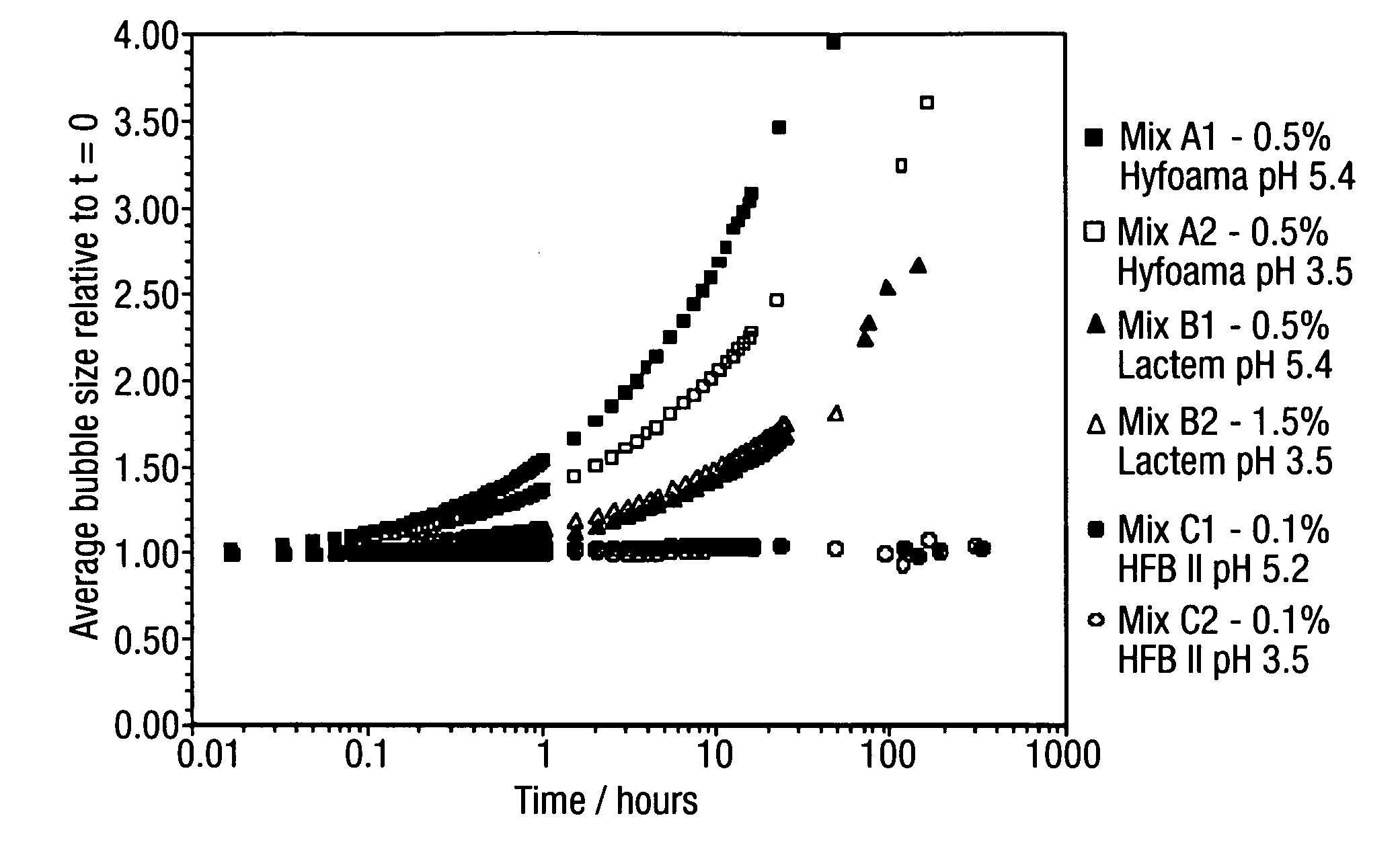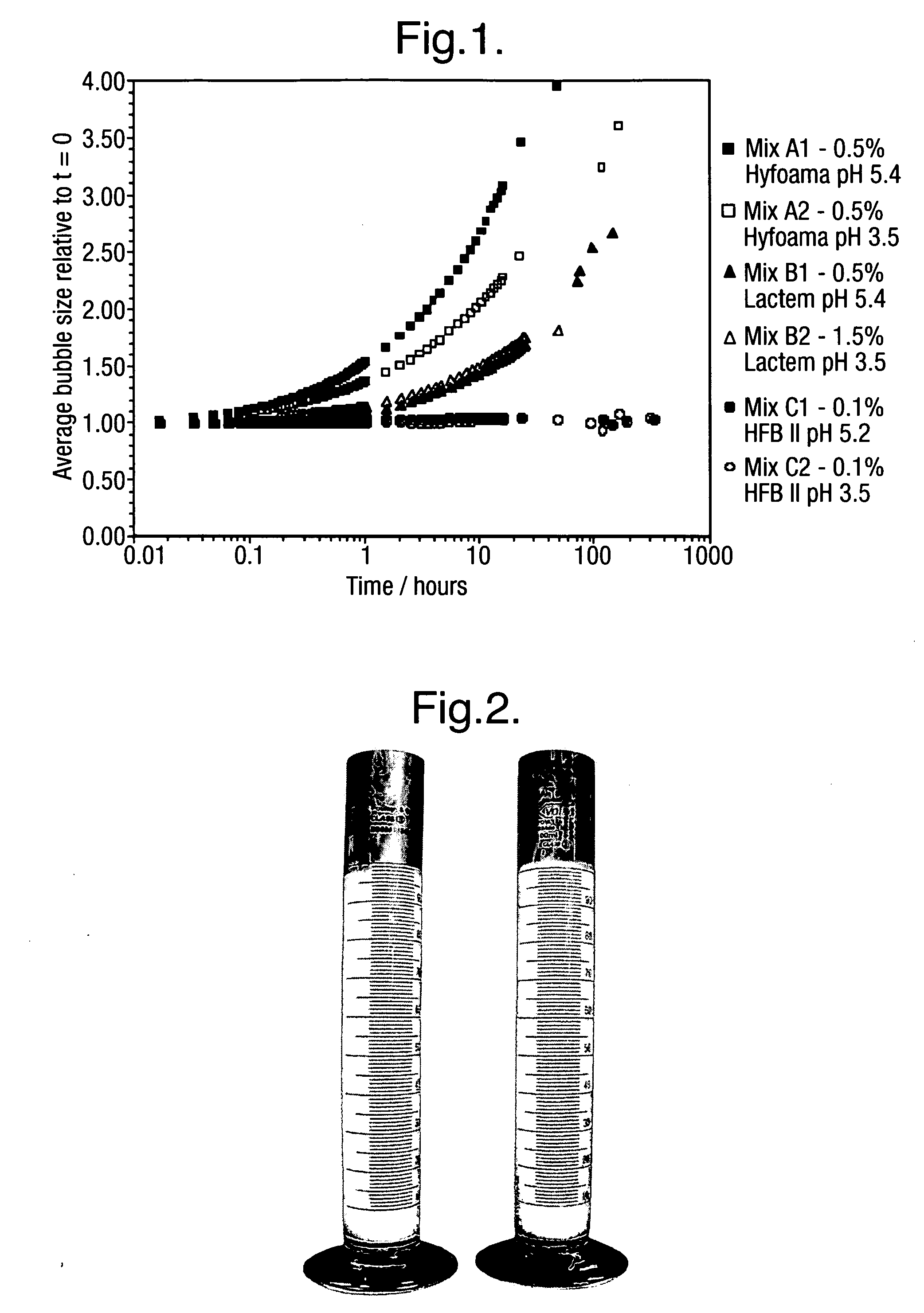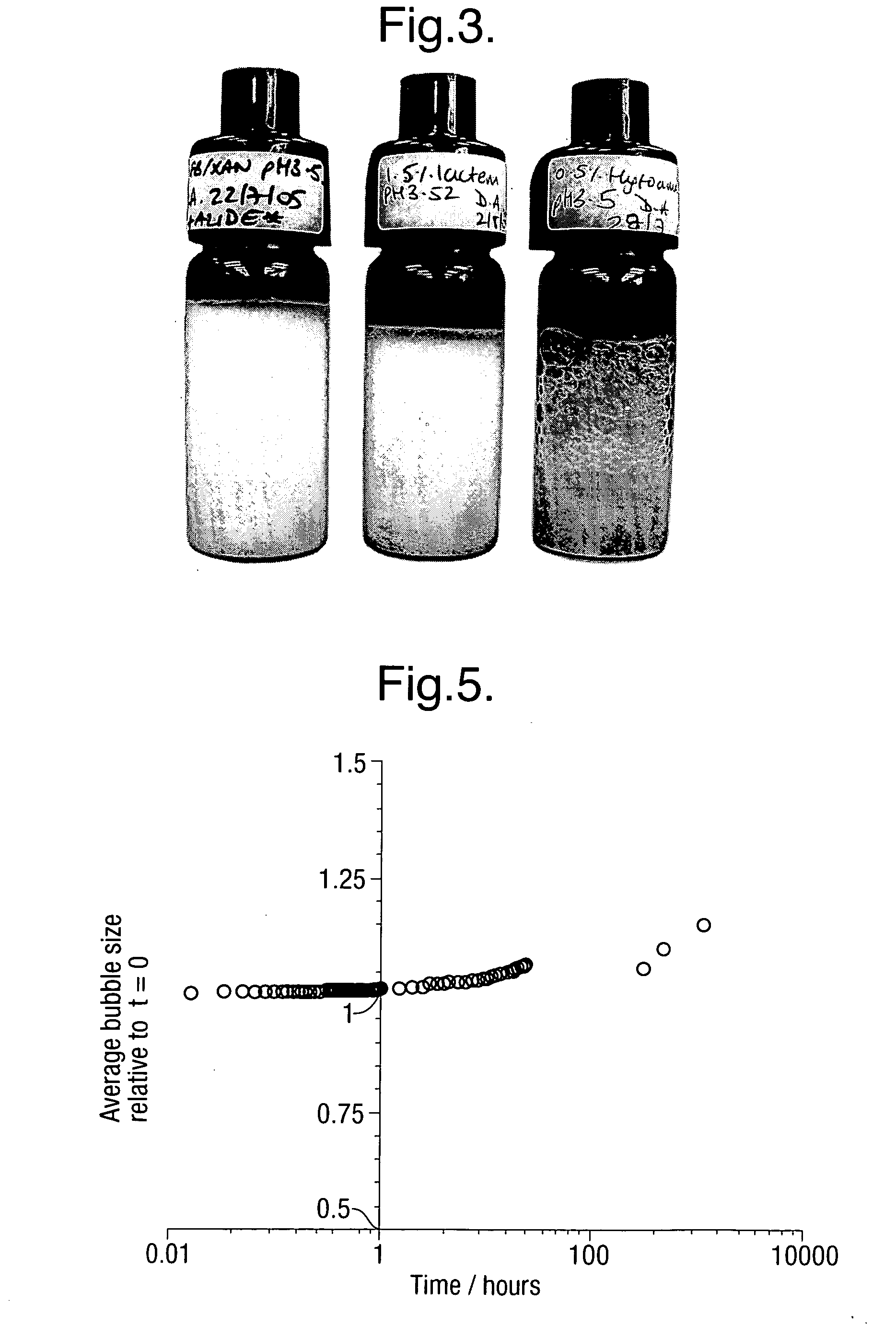Low pH aerated products
a technology of compositions and aerated products, which is applied in the field of low ph aerated compositions, can solve the problems of poor air incorporation, adversely affecting the foaming ability and the resulting stability of the foam made using proteins, and dairy proteins in particular tend to be ph sensitiv
- Summary
- Abstract
- Description
- Claims
- Application Information
AI Technical Summary
Benefits of technology
Problems solved by technology
Method used
Image
Examples
example 1
Aerated Low pH Products
[0076] Aerated products were prepared comprising solutions containing an acid, xanthan gum, and one of three aerating agents (A-C) listed below.
[0077] A: Hyfoama DS
[0078] B: Lactic acid ester of monoglyceride (Grinsted Lactem P 22, LACTEM)
[0079] C: Hydrophobin (HFBII) from Trichoderma reesei (HFBII was obtained from VTT Biotechnology, Finland, purified from Trichoderma reesei essentially as described in WO00 / 58342 and Linder et al., 2001, Biomacromolecules 2: 511-517).
[0080] Details of the materials used are summarised in Table 1 and the formulations from which each of the foam samples was prepared are shown in Table 2 (Mixes A to C).
[0081] Xanthan was added to each mix in order to prevent creaming of the foam. This allows full analysis of bubble size as a function of time without the complication of other destabilising factors such as creaming. In other words, we are measuring the stability of the foams to destabilising mechanisms such as disproportiona...
example 2
Aerated Product Containing Tea Extract
Preparation of Aerated Product
[0098] A mix containing tea extract of the following formulation was made. 0.1% HFBII, 0.5% xanthan, 0.16% green tea powder, and the remainder water. The mix was prepared as follows: The xanthan and green tea powder were slowly add to cold water with agitation and stirred for at least 30 minutes to ensure that the polymer was fully hydrated. Then, the required concentration of HFB II was added as an aliquot. The solution was then gently sonicated in a sonic bath for 30 seconds to fully dissolve the HFB II. The mix was cooled and stored at 5° C. until further use.
[0099] Before aeration the solution was acidified to the desired pH of 5.4 using a 10 wt % solution of citric acid. The mix was then aerated to 100% overrun using the stirred pot in the same manner as described for the mixes in Example 1. The aerated mix was then stored at 5° C. and analysis of bubble size and foam volume was made as a function of time u...
example 3
Aerated and Frozen Fruit Sorbet
[0101] Two sorbets were produced using the ingredients listed in Table 4. Product J was produced using the formulation for Mix J, described in Table 5. The air stabilising agent in this product was a commercially available aerating agent called Hygel, a hydrolysed milk protein. Product K was produced using the formulation shown for Mix K. The air stabilising protein in this product was hydrophobin, HFBII.
TABLE 4Materials usedIngredientDetails and SupplierSucroseTate and LyleLF963DE corn syrup, C*Trusweet 017Y4,Cerestar, UKXanthan gum (Keltrol RD)CPKelcoCitric acidJungbunzlauer AGStrawberry pureeSVZ International BVHydrophobin HFB IIPurified from Trichoderma reesei, purchasedfrom VTT Biotechnology, FinlandHygel 8293A hydrolysed milk protein, minimum 80%protein, obtained from Kerry Bioscience,UK.
[0102]
TABLE 5FormulationsMix JMix KConcentration / Ingredientwt %HFB II00.1Hygel0.20Xanthan gum0.20.2Citric acid0.20.2Sucrose10.510.5LF917.317.3Strawberry puree...
PUM
| Property | Measurement | Unit |
|---|---|---|
| Fraction | aaaaa | aaaaa |
| Fraction | aaaaa | aaaaa |
| Fraction | aaaaa | aaaaa |
Abstract
Description
Claims
Application Information
 Login to View More
Login to View More - R&D
- Intellectual Property
- Life Sciences
- Materials
- Tech Scout
- Unparalleled Data Quality
- Higher Quality Content
- 60% Fewer Hallucinations
Browse by: Latest US Patents, China's latest patents, Technical Efficacy Thesaurus, Application Domain, Technology Topic, Popular Technical Reports.
© 2025 PatSnap. All rights reserved.Legal|Privacy policy|Modern Slavery Act Transparency Statement|Sitemap|About US| Contact US: help@patsnap.com



